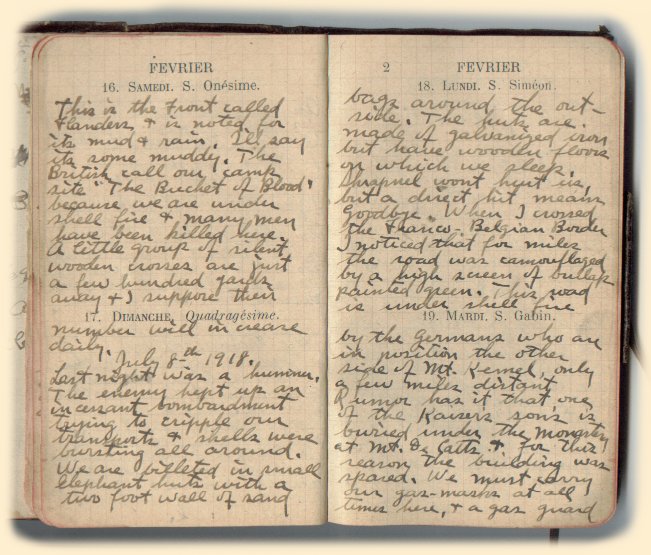This is the front called
Flanders & is noted for
its mud & rain. I'll say
its some muddy. The
British call our camp
site "The Bucket of Blood"
because we are under
shell fire & many men
have been killed here.
A little group of silent
wooden crosses are just
a few hundred yards
away & I suppose their
number will increase
daily.
July 8th 1918.
Last night was a hummer.
The enemy kept up an
incessant bombardment
trying to cripple our
transports & shells were
bursting all around.
We are billeted in small
elephant huts with a
two foot wall of sand
|
bags around the out-
side. The huts are
made of galvanized iron
but have wooden floors
on which we sleep.
Shrapnel wont hurt us,
but a direct hit means
goodbye. When I crossed
the Franco-Belgian Border
I noticed that for miles
the road was camouflaged
by a high screen of burlap
painted green. This road
is under shell fire
by the Germans who are
in position the other
side of Mt. Kemel, only
a few miles distant
Rumor has it that one
of the Kaisers son's is
buried under the monastery
at Mt. De Catts & for this
reason the building was
spared. We must carry
our gas-masks at all
times here, & a gas guard
|

